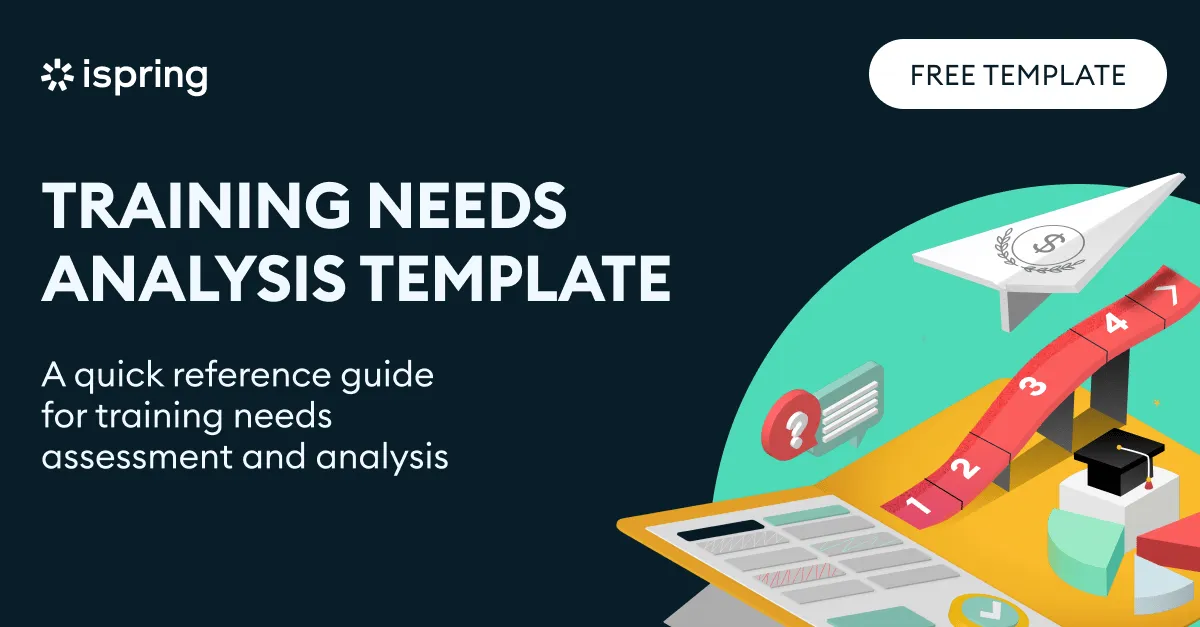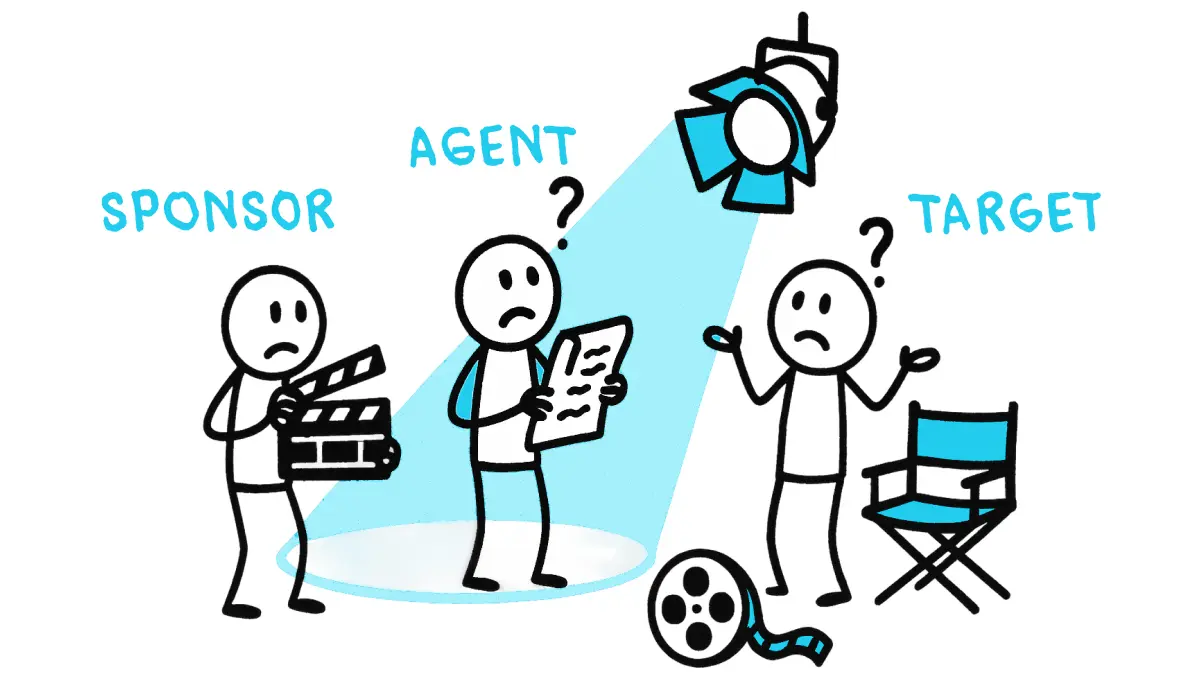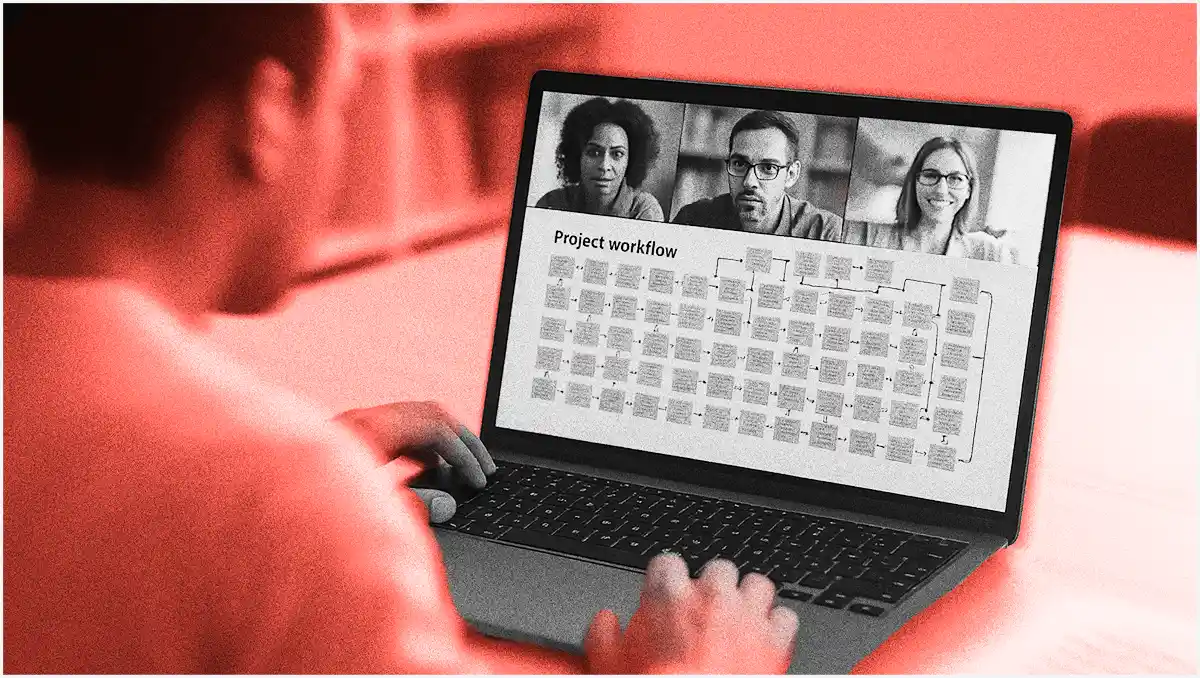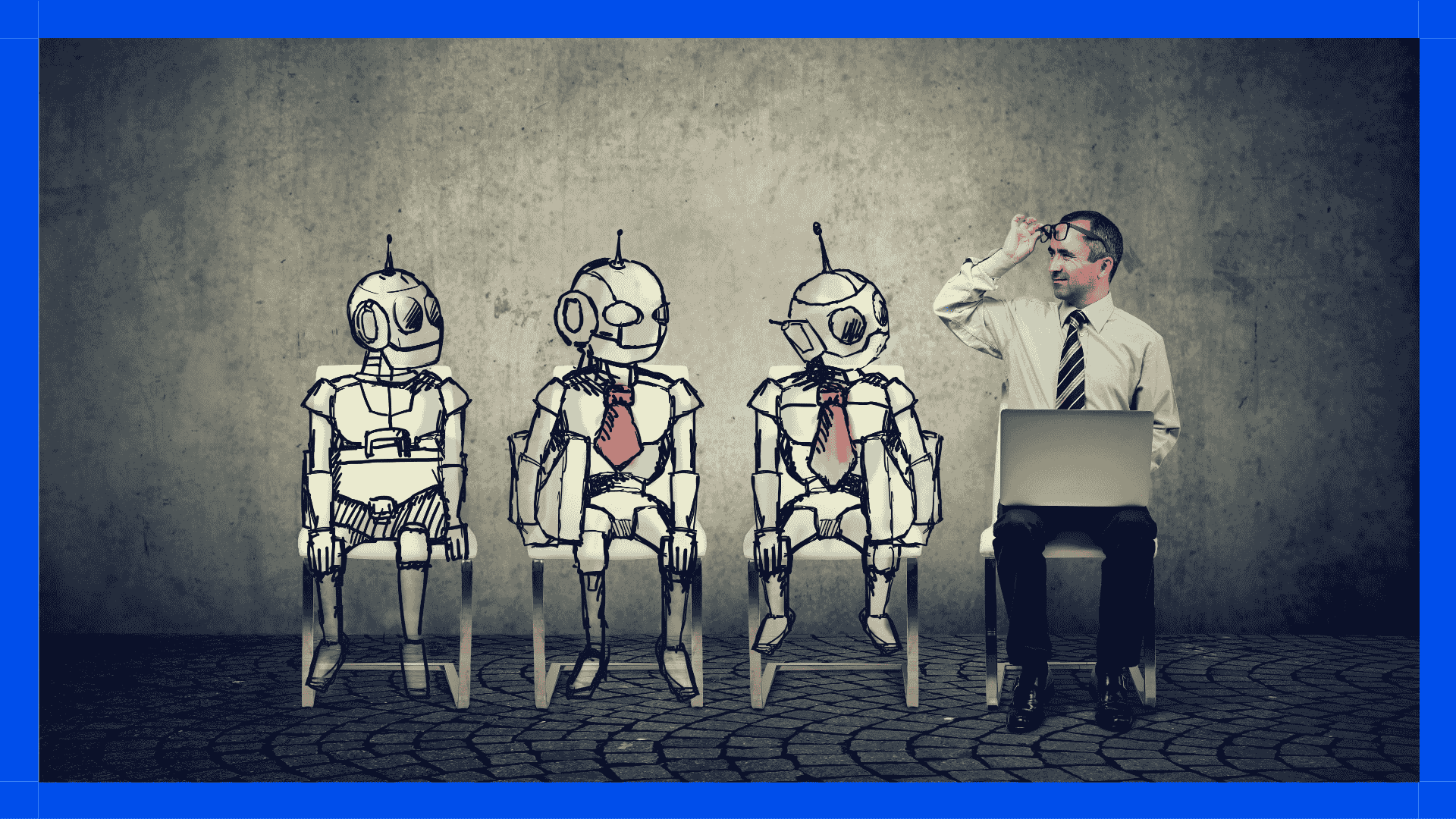.webp)

This week: What’s Behind the Gen Z Stare?
You’ve seen it. That unblinking pause in conversation, blank expression, zero verbal cues. Disrespect? Turns out, it’s something else entirely. As Gen Z enters the workforce, their communication style is clashing with expectations, and revealing deeper shifts in power, trust, and attention norms.
We also dive into:
- Cast Your Change Team: Phil Kirschner explains why successful transformation starts with recruiting the right internal influencers, not just execs.
- Can You Steal the Nvidia Strategy?: Dror Poleg on why flexible work wasn’t a perk—it was the foundation of Nvidia’s $4T rise.
- Employee-Centered Curiosity: Ashley Herd shares why messaging built with employees, not for them, wins hearts and action.
- Recovery Is the Leadership Skill: Burnout isn’t just personal, it’s systemic. Learn how recovery rhythms are becoming essential executive tools.
- Fire Now, Regret Later: Chief AI & Data Democratization Officer at Mostly AI warns that cutting humans for AI efficiency may sabotage long-term innovation. Creativity isn’t automatable, and neither is your competitive edge.
Let’s get into it 👇

The Gen Z stare — a blank, unreadable look — has become a viral symbol of workplace confusion. But as a manager, especially in a multigenerational team, it is more than just a meme. It is a reminder that leading today means recognizing new forms of communication shaped by digital life, burnout, and shifting values.
Yes, it is hard. But behind that stare may be a real signal, not disengagement, but a different way of showing up. And it is on us as leaders to meet it with curiosity, not criticism.
A Generation Shaped by Surveillance and Pandemic Gaps
Business Insider reports the stare may reflect self-protection, not apathy.
- Gen Z came of age during pandemic lockdowns, missing key years of in-person social learning.
- They’ve spent much of their lives under online surveillance — taught to be polished, filtered, and wary.
- The blank expression is often a shield, not a sign of disinterest — a learned response in a system they didn’t design.
A Rejection of Achievement Culture
According to CNBC, Gen Z isn’t lazy. They’re redefining success.
- In a recent values study, Gen Z ranked Achievement 11th out of 15, with 65% saying it dominates too much of their lives.
- Instead, they value Eudaimonia (inner balance) and Voice (authentic self-expression).
- What looks like indifference may be a boundary, a quiet rejection of performative ambition.
A Workplace Flashpoint and Economic Warning Sign
Fortune warns the stare may point to systemic disconnects.
- 58% of Gen Z graduates are still job hunting, despite being highly qualified.
- 27% of managers say they would prefer not to hire Gen Z at all.
- The result: disillusionment with outdated career paths and a gap between skills and roles. That look? It’s exhaustion, not entitlement.
A Leadership Misread with Strategic Costs
Forbes reframes the Gen Z stare as a freeze response — shaped by pandemic isolation and text-based communication norms.
- Managers risk seeing the stare as disrespect, when it may actually be Gen Z’s version of active listening.
- Instead of criticizing it, leaders should adapt onboarding, shift to agile management, and create psychological safety.
- If we ignore the signal, we risk losing the trust and talent of the generation soon to dominate the workforce.
The Bottom Line
The Gen Z stare isn’t a performance issue — it’s a cultural cue. For small teams, here’s how to respond:
- Check in, don’t call out: Quiet doesn’t mean checked out. Ask privately, “Was anything unclear?” or “How can I support you?”
- Skip small talk, invite real talk: Gen Z values honesty over fluff. Try, “What inspired you this week?” or “What’s one thing we could improve?”
- Explain the why, not just the what: Purpose fuels engagement. Show how their work connects to team goals.
The goal isn’t to fix the stare — it’s to lead with clarity, respect, and trust on their terms.
Your Friday Briefing on the Future of Work
Future Work delivers research-backed insights, expert takes, and practical prompts—helping you and your team capture what matters, build critical skills, and grow into a future-ready force.
Get all-in-one coverage of AI, leadership, middle management, upskilling, DEI, geopolitics, and more.
Unsubscribe anytime. No spam guaranteed.
Launching online training programs always demands serious investments, so the goal of needs assessments is to make sure that learning can solve the problem and give a credible estimate of whether these investments will pay off.

Download a free Training Needs Analysis Template packed with everything HR teams may need to implement meaningful and result-driven training programs. Learn how to:
- ✅ Analyze the current situation
- ✅ Identify business and performance goals
- ✅ Interview employees and stakeholders
- ✅ Conduct knowledge and skill gap analysis
I keep a close eye on what our Future Work Experts are thinking, saying, and questioning. I break down the key conversations and brainstorm practical steps we can take to move forward.
This week:
CHANGE LEADERSHIP ROLES

Phil Kirschner: Cast Your Change Team Right
- In a poll of AI change leaders, 79% said their organization lacked consistent change processes—despite 60% identifying as change agents.
- Effective transformation depends on clearly defined roles: Authorizing Sponsors, Reinforcing Sponsors, Change Agents, and Change Targets—each with specific, non-transferable responsibilities.
- Change resistance often stems from role confusion, not pushback. When leaders or agents aren’t visibly aligned or empowered, transformation slows or fails.
📝 Prompt: Pull up your current change initiative. Can you assign real names to each of the 4 core roles? If not, do it this week, and check they know their part.
👉 Read the full breakdown and download the 8-role org chart to align your change cast.
🎥 Replay Now: AI Rollouts, Resistance, and Change Management.
TEAM OPERATING SYSTEMS

Sophie Wade: Systematize How Your Team Works
- Only 21% of AI change leaders report having repeatable change systems—most teams operate with uncoordinated, ad hoc workflows.
- Applying Production & Operations Management (POM) to knowledge work helps teams define inputs, flows, bottlenecks, and feedback loops—making workflows visible and improvable.
- High-performing teams design cooperation using design thinking, fostering mutual mental models, co-ownership rituals, and empathy across distributed ecosystems.
📝 Prompt: Map a key team process this week: What’s the input, who touches it, where does it bottleneck, and how is success tracked? Then ask the team what’s not working.
🔥 QUICK HITS:
(LEADERSHIP COMMUNICATION) Ashley Herd: Connection Starts with Curiosity
- Most leaders default to one of four styles: Detached, Leader-Centric, Common Ground, or Employee-Centered Curiosity, with only the last truly driving trust and retention.
- Employee-Centered Curiosity involves asking genuine, open questions about your team’s interests—even if you can’t relate—and builds psychological safety and long-term engagement.
- Overusing common interests can create perceived favoritism, and leader-centric sharing often makes teams feel like an audience, not collaborators.
📝 Prompt: In your next 1:1, ask: “What’s something outside of work that’s been bringing you joy lately?” Then really listen, and follow up next time. You’ll build connection without adding meetings.
👉 Read the full piece to identify your style and shift toward what works.
(AI IN CRE) Antony Slumbers: 10X AI in Real Estate
- AI turns elite, bespoke CRE services (like lending memos, market scanning, ESG planning) into scalable, affordable tools, reshaping the industry’s economics.
- Ten AI agents are poised to democratize asset strategy, leasing, property management, and investment insights, each with high latent demand and strategic upside.
- To win: CRE pros must adopt a 10X mindset, prioritize data interoperability, and build AI-powered ecosystems, not just efficiency tools.
📝 Prompt: Which white-glove service your team provides could be reimagined as a scalable, AI-powered product? Run a 1-hour brainstorm with this lens.
👉 Read the full guide with 10 AI agent opportunities.
(AI IN HR) Anthony Onesto: Choosing the Right AI Tool
- 66.3% of HR pros now use AI daily, with hiring and assessment the most common use cases.
- Stick with ChatGPT, Gemini, or Claude, they’re fast, capable, and versatile. For serious work, upgrade to Pro models and switch off the default "fast" mode.
- Use AI for more than writing, deep research, voice commands, screen/camera input, and even CT scan analysis are now in reach.
📝 Prompt: Audit your team’s current AI use: Are they stuck in “free fast mode”? Try one serious task this week using a pro-tier model—then discuss what could be automated or improved.
I track what’s worth your attention—bringing you the news and updates that matter most to how we work, lead, and grow.
This week:
EMOTIONAL RECOVERY

Recovery Is a Leadership Skill
- In 2024, manager engagement dropped for the first time in over a decade; 77% say leadership is harder than ever (Modern Health, 2025).
- Emotional depletion from daily leadership tasks—feedback, layoffs, team losses—leads to burnout, lower resilience, and poor decision-making.
- Three practices help leaders recover: Reflection (naming emotions), Reframing (finding meaning), and Restoring (detaching, relaxing, mastering, choosing).
📝 Prompt: After your next tough day, pause for five minutes. Write (or voice memo) how you felt, what it revealed, and what you needed. Make this your quiet reset before showing up again.
AI & WORKERS

AI Use Misses What Workers Actually Want
- A Stanford study found 69.4% of workers want AI to handle repetitive tasks but 45% lack trust in current AI accuracy; most desire collaborative control, not full automation.
- Researchers mapped tasks by worker desire vs. AI ability, revealing a major mismatch: 41% of AI use cases fall into “Red Light” or “Low Priority” zones — either unwanted or not yet feasible.
- Skills likely to rise in value include interpersonal communication, teaching, and task coordination, while data analysis skills may decline due to automation.
📝 Prompt: Ask your team which repetitive tasks are draining their time. Then test one AI tool this week to offload that specific task, together. Let them control how and when it’s used.
AI + TALENT

AI Cuts Are Short-Sighted
- Alexandra Ebert, Chief AI & Data Democratization Officer at Mostly AI, warns that replacing humans with AI now will backfire in 5 years.
- Over 64,000 tech layoffs this year were AI-related, but firms cutting creative talent may lose long-term innovation power.
- AI imitates, but only humans invent—McKinsey data shows innovative cultures are 3.5x more likely to outperform. Efficiency gains are often overhyped; real value comes from empowered teams, not short-term cuts.
📝 Prompt: Instead of asking, “Where can we cut?” ask: “Where can AI amplify our people’s creativity and value?”
Then identify one high-potential team or project and invest in exploration time, before your innovators become someone else’s hires.
ENTRY-LEVEL REDESIGN

The Future of First Jobs
- Redesign, Don’t Retire Entry-Level Roles: Companies are rethinking junior jobs by (1) aligning them with strategic advantages, (2) creating brand-new roles, (3) letting juniors try senior-level tasks, and (4) raising difficulty with strong coaching.
- New AI-Driven Roles Are Emerging: IBM and others are building entry-level roles around AI system feedback, trend spotting, and real-time communication, not just task execution.
- Stretch, Coach, Repeat: Stanford research shows junior workers thrive when AI lets them take on harder problems, paired with tight senior feedback loops, boosting both learning and team performance.
📝 Prompt: Pick one task your senior team owns today. Assign it to a junior team member using AI support, and run a peer review session after. Let them fail forward, just faster and smarter.
RTO

Starbucks Pushes 4-Day Office Week
- Starbucks will require corporate employees to work in-office 4 days/week starting October 2025, aligning with its new fiscal year.
- All support center people leaders must relocate to Seattle or Toronto within 12 months; future corporate roles require geographic presence.
- A voluntary departure package (one-time cash payment) is available for those unwilling to comply with the RTO shift.
📝 Prompt: For teams impacted by new RTO policies, co-create a weekly in-office ritual, like a leadership Q&A or cross-team lunch, to make time together purposeful, not just mandatory.
🔥 QUICK READ:
- Can Trump Fire Powell? Trump is exploring ways to demote or fire Fed Chair Powell, citing a controversial HQ project, but legal and institutional resistance remains high. Even if demoted, Powell would stay on the FOMC—limiting White House control and raising concerns about central bank independence and market stability.
- Why Every Firm Needs a Geopolitical Lead: With global instability rising, only 32% of leaders report effective change adoption, and geopolitical risk indexes have surged. A Chief Geopolitical Officer (CGO) integrates global intelligence into strategy, managing regulatory divergence, cyber conflict, economic sanctions, and military fallout across markets. Top firms like Apple and Tesla are already adapting, with 50% of iPhone output now in India and over 40% of Tesla deliveries coming from Shanghai.
Your Friday Briefing on the Future of Work
Future Work delivers research-backed insights, expert takes, and practical prompts—helping you and your team capture what matters, build critical skills, and grow into a future-ready force.
Get all-in-one coverage of AI, leadership, middle management, upskilling, DEI, geopolitics, and more.
Unsubscribe anytime. No spam guaranteed.

